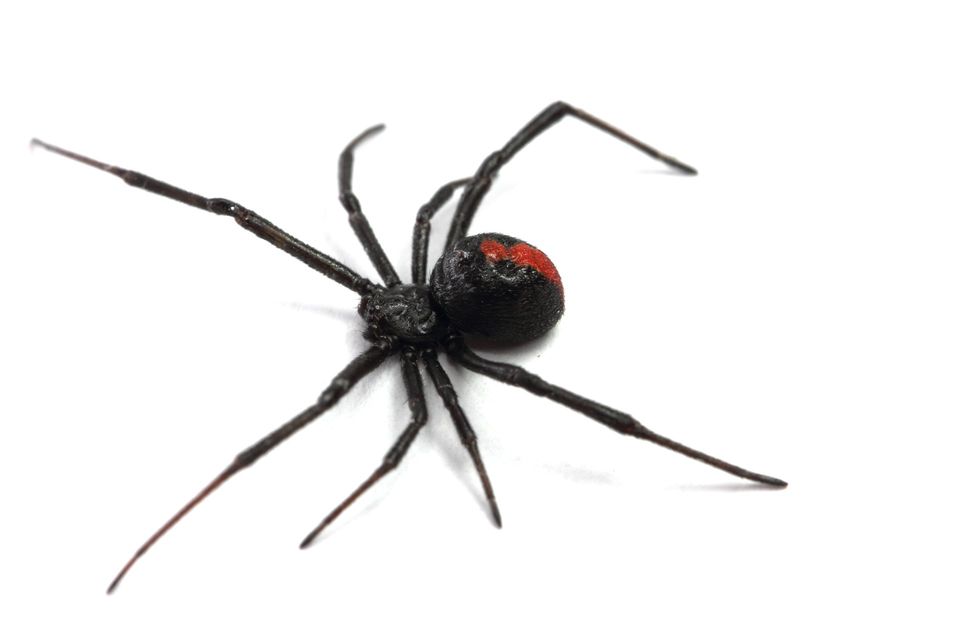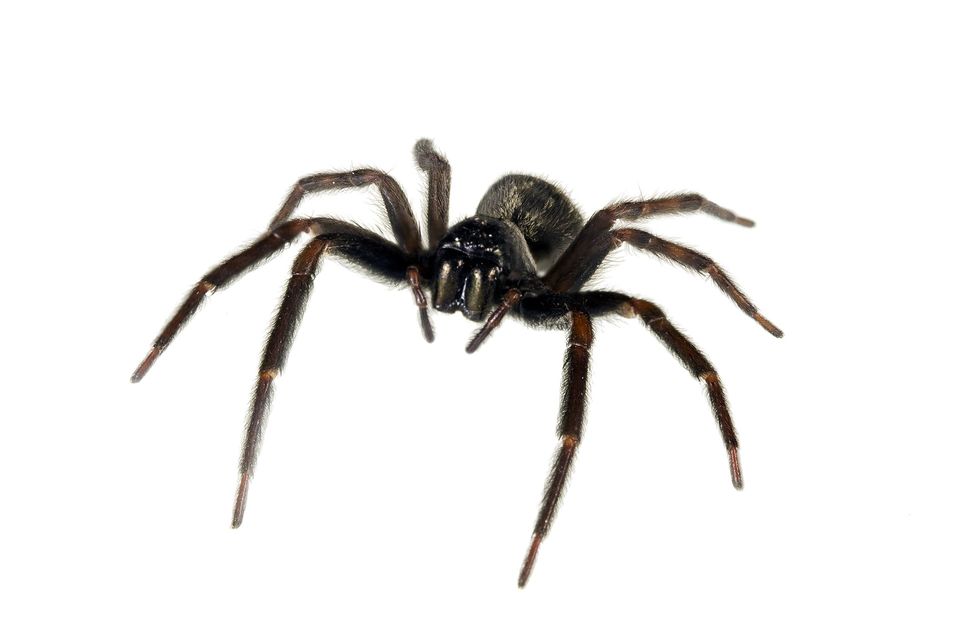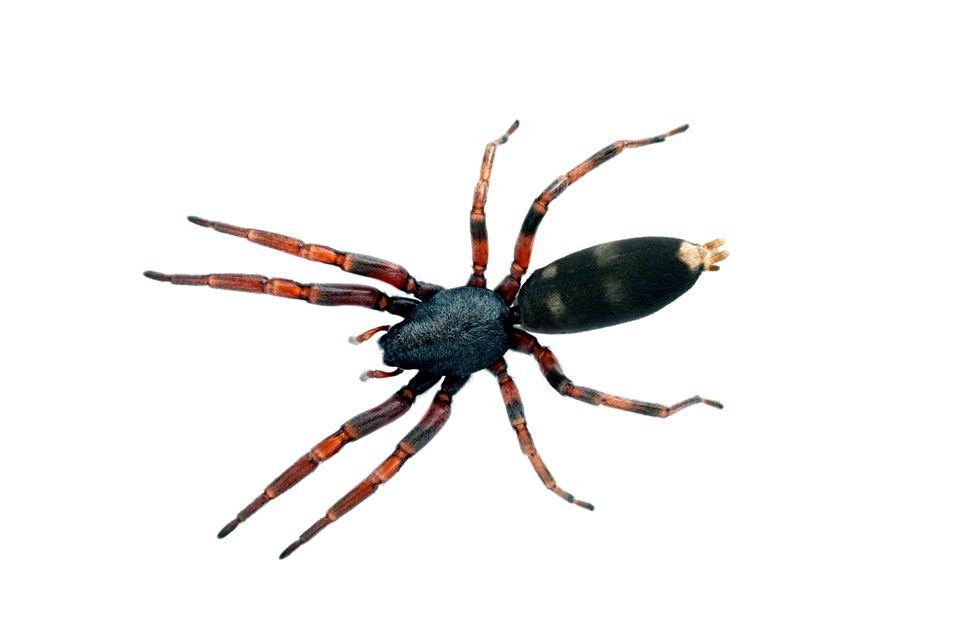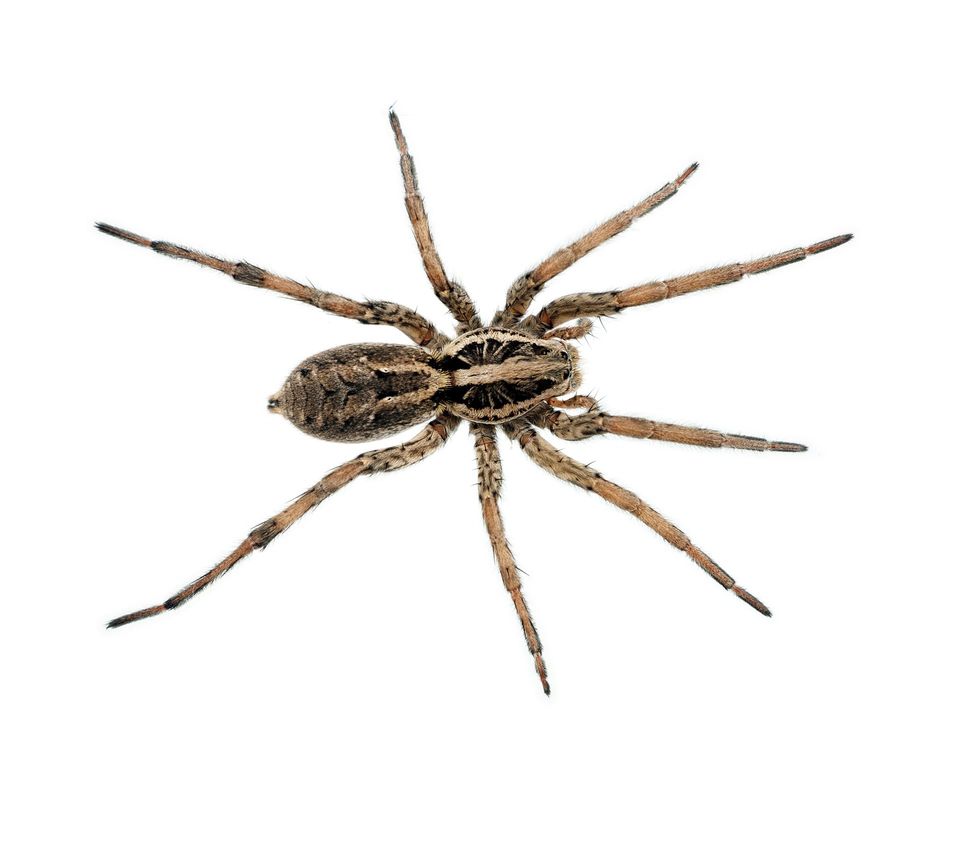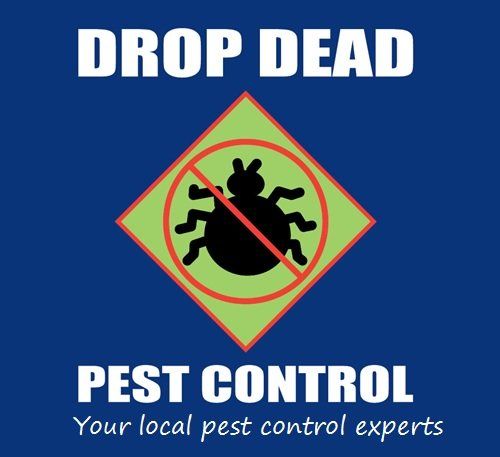PROTECT YOUR HOME OR BUSINESS FROM ALL TYPES OF SPIDERS
RED-BACK SPIDERS
Mature female red-back spiders are jet black in colour with a red / orange hourglass stripe on the back of their round abdomen and slender legs. Immature females are smaller and usually brown with whitish markings. Male red-back spiders are small and brown and can have red or white markings on their abdomens. Male red-backs are not dangerous and are rarely seen. They are not aggressive and rarely leave their web. Red-back bites usually occur when part of the body comes in direct contact with the spider or its web, especially in warmer months. Onset of pain from the bite can be delayed for up to five minutes and then rapidly increases in intensity. Their venom is poisonous and can cause serious illness. Bites can be potentially fatal for children and the elderly. Symptoms vary but can include generalized paid, nausea, vomiting, sweating, restlessness, weakness, palpitations, muscle spasm and fever. No deaths have been recorded since the antivenin became available.
Red-back spiders are found throughout Australia in built-up areas in dry sheltered sites. They have untidy webs with sticky threads that run to the ground from the web above. They are often found nesting with their woolly looking egg sacs in dry places around buildings, in sheds, colourbond and pool fencing, in children’s play equipment and outdoor furniture. In the bush, red-back spiders nest under logs and rocks. Red-back spiders feed mainly on ground dwelling insects that come across their webs. Sometimes, small vertebrates such as lizards and even mice often become dinner! Females also eat the tiny male red-backs. Spiderlings hatch and take to the wind when the conditions are right and spread quickly.
RED-BACK SPIDER BITE PREVENTION
- Be cautious when working around the outside of the house, in your shed and in the garden.
- Wear gloves when gardening and moving stored items outside and outdoor furniture.
- Know potential areas where they frequent and what their web and egg sacs look like.
- Don’t leave children’s toys outside in the garden.
FIRST AID
- Keep calm and seek medical attention.
- If a limb is bitten, don’t bandage, apply iced water and take simple painkillers.
- Carefully collect the spider for identification (even if squashed)
- Seek medical aid as soon as possible.
BLACK HOUSE SPIDER
The Black House Spider is a dark robust spider, with the female being larger than the male. The upper body and legs are dark brown to black, and the abdomen is charcoal grey with a dorsal pattern of white markings. They are commonly found on buildings in window frames, doorways and wall crevices and on rough- barked trees and rock walls in gardens and bush throughout Australia. Their webs look like untidy lacy silk sheets and have a ‘funnel-like’ appearance which is sometimes misinterpreted as a Funnel-web Spider web.Around the house, they feed upon household pests attracted to the light of windows and lamps.
The female spider never leaves the web unless forced to and males when ready to mate, go in search of females. Their predators are white-tailed spiders, wasps and flies.Black house spiders are venomous but are not considered dangerous. They are timid spiders and bites from them are infrequent. The bite may be excruciatingly painful and cause local swelling. Symptoms such as nausea, vomiting, sweating and giddiness have been recorded. In a few cases, skin lesions have developed after multiple bites.
BITE PREVENTION
- Be cautious when working around the house and in the garden.
- Know potential areas where they frequent.
- Know what their webs look like.
FIRST AID
- Keep the patient calm and still.
- Apply a wrapped ice-pack or a cold compress and elevate the limb.
- Carefully collect the spider for identification (even if squashed)
- Seek medical advice as soon as possible.
FUNNEL WEB SPIDER
Funnel-webs spiders are large black spiders ranging from 1.5 – 5cm with a shiny head and thorax. The colour of their abdomen ranges from brown to bluish. They are aggressive when provoked and will rear-up and strike. Their venom is highly toxic. They live in underground burrows in sheltered habitats under rocks and logs, and in stumps and tree trunks in the garden. Their burrows are lined with silk and the entrance has several strong strands of silk that radiate outwards and act as trip-lines for prey.
Female funnel-web spiders can live up to 20 years. The spend most of their life in the burrow only venturing out to grab passing prey such as small vertebrates such as lizards and frogs. Males leave their burrows in the warmer months and wander looking for a female, especially during or after rain and may enter your home. They can often be confused with black house, mouse or wolf spiders. There are 35 described species of funnel-web spiders. The most common species is the Sydney funnel-web (Atrax robustus). This is the most venomous of the species and have been found as far as Newcastle in the north, Nowra in the south and Lithgow in the west. Bites by males of two large species, the Sydney funnel-web and northern tree funnel-web, have resulted in death however no deaths have been recorded since the introduction of the antivenene in 1981.
FUNNEL-WEB SPIDER BITE PREVENTION
- Wear shoes when outside in the garden.
- Wear gloves when gardening.
- Know what their burrow looks like.
- Don’t leave shoes outside overnight.
- If camping, close tent flaps and shake out any footwear, clothes and sleeping bags left on the ground.
FIRST AID
- Keep calm and move only if necessary.
- If a limb is bitten, apply a pressure bandage to bite area and around the limb towards heart.
- Immobilise the limb with a splint.
- Carefully collect the spider for identification (even if squashed)
- Seek medical aid as soon as possible.
WHITE TAIL SPIDER
White-tailed (or white-tipped) spiders have a dull black, cylindrical body with a distinctive white spot at the end of their abdomen. Females are larger than males, have a plump abdomen and grow up to 20 mm long. Males are thinner and grow to about 12 mm long. Adult white-tailed spiders have reddish legs and two pairs of faint white spots on the top of the abdomen. Less mature spiders have striped legs with more distinct white spots which fade with age. They are commonly found in homes and other buildings, although their natural habitat is under rocks, fallen timber and bark in gardens and in bush land.
White-tailed spiders live on the ground and lay eggs in a chamber lined with silk in a dark sheltered place. They do not live in a web but wander slowly in search of prey, which mostly consists of other spiders. During the day they seek dark places to hide before emerging at night to feed. White-tail spiders will shelter under almost anything including clothes left on the floor overnight and bed coverings. They can often travel in to the home in a washing basket placed on the grass outside. White-tail spider bites result in localised pain, redness and swelling which may last from a few hours to a few days, although in some cases the symptoms are more severe. This spider has a bad reputation however there is no proof that its bite causes long-term tissue damage. Infection and ulceration of a bite wound can often be due to the bacteria on their fangs from a previous meal.
WHITE TAIL SPIDER BITE PREVENTION
- Be cautious when bringing in clothes or rugs that have been left on the ground outsid
- Wear gloves when gardening.
- Know potential areas where they frequent.
- Avoid leaving clothes on the floor overnight.
- Check under bed coverings before getting into bed.
FIRST AID
- Keep the patient calm and still.
- Wash the area well to remove any remaining venom.
- Apply a wrapped ice-pack or a cold compress and elevate the limb.
- Carefully collect the spider for identification (even if squashed)
- Seek medical advice as soon as possible.
WOLF SPIDER
Wolf spiders are large, agile, robust ground hunters growing up to 25mm in body length. They are grey-brown in colour with a pattern of bars on their abdomen and radiating marks on the head and thorax. Garden wolf spiders are found throughout Australia and make their vertical burrows in the ground of suburban yards and gardens. They can often be seen sitting just inside the entrance to their burrow which has a collar of silk but no lid, and if provoked may rear up in defense or quickly retreat inside. They are often seen wandering on lawns and gardens at night in search of prey and sometimes wander into homes. They are robust and agile hunters with excellent eyesight.
Other species of wolf spider, as well as some trapdoor spiders, make a lid for the opening of their burrow. Female wolf spiders carry their egg sac attached to spinnerets under the abdomen and may ‘sun’ it periodically until the young hatch. Upon hatching the spiderlings swarm over their mother and are carried around on her back for a few days before dispersing. Wolf spiders will bite and inject venom if continually provoked. The effects of a bite include localised pain, swelling and itching, nausea and headaches.
WOLF SPIDER BITE PREVENTION
- Be cautious when walking around the lawn in the evening.
- If you see a wolf spider, do not provoke it.
- Seal cracks on the outside of your home and use screens on doors and windows.
FIRST AID
- Keep the patient calm and still.
- Apply a wrapped ice-pack or a cold compress and elevate the limb.
- Take simple pain killers.
- Carefully collect the spider for identification (even if squashed)
- seek medical advice as soon as possible.
Find Your Local Expert
All Locations
LIST
MAP
- Sutherland Shire West 800-812 Old Illawarra Rd, Menai NSW 2234, Australia
- Sutherland Shire East Caringbah, Sydney, NSW 2229, Australia
- Padstow Padstow, Sydney, NSW 2211, Australia
- Eastern Suburbs Mascot, Sydney, NSW 2020, Australia
- St George 800-812 Old Illawarra Rd, Menai NSW 2234, Australia
- Head Office 800-812 Old Illawarra Rd, Menai NSW 2234, Australia

